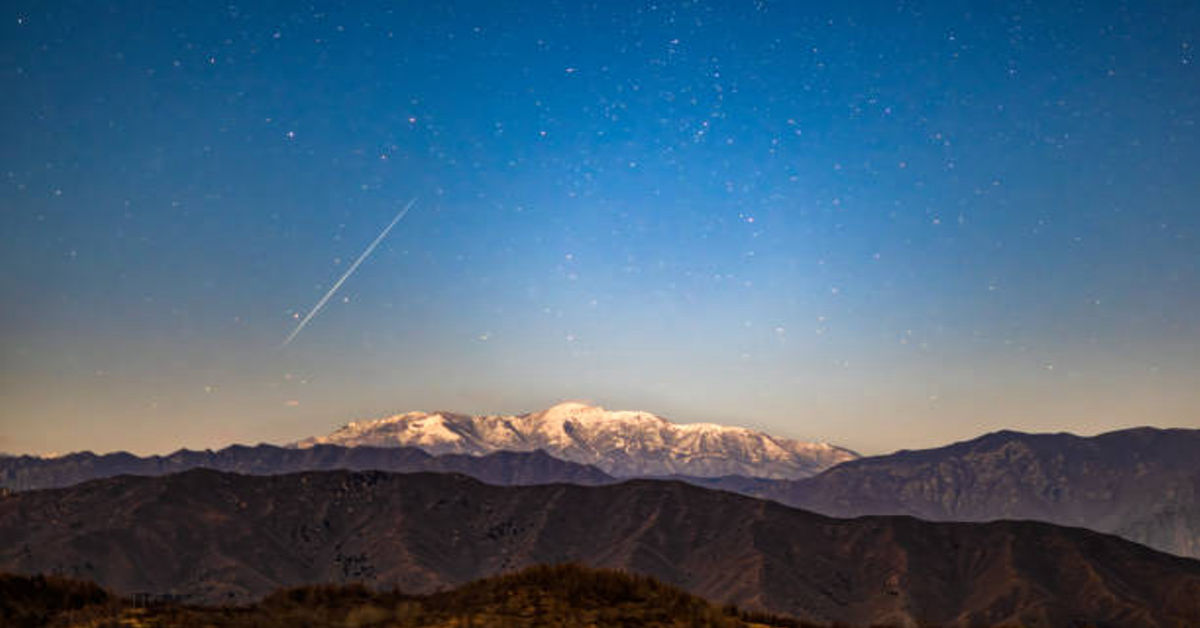Human curiosity has always been triggered by the sky and the spectacular natural phenomena that occur above our heads. Among these magnificent events, the meteoro—commonly known as a meteor—stands out as one of the most fascinating. A meteoro lights up the night sky for only a few seconds, yet behind this brief flash are millions of years of cosmic history. This article explores in detail the origin, nature, science, observation methods, cultural relevance, and differences between meteoro and similar astronomical terms. The goal is to provide a rich, clear, and deeply informative guide that expands the understanding of the topic from both scientific and human perspectives.
1. What Is a Meteoro? – The Basic Definition
A meteoro is the visible flash of light created when a piece of cosmic debris enters Earth’s atmosphere at extremely high speed. Although many people call the object itself a meteor, scientifically, the meteoro is the phenomenon—the light and heat produced—while the object causing it is called a meteoroid. When the meteoro maintains its brightness long enough to be observed clearly, it creates what is popularly called a “shooting star.”
This brief flash happens because the small rock, traveling at thousands of kilometers per hour, experiences friction through the atmospheric layers. This friction produces intense heat, enough to vaporize most of the meteoroid. The result is a glowing streak that may last only a second or two, yet remains one of the most memorable astronomical sights for observers on Earth.
2. Meteoro, Meteoroid, and Meteorite – Understanding the Differences
Many people confuse meteoro with meteorite or meteoroid, but each term represents a specific stage in the life cycle of a cosmic fragment.
Table: Differences Between Meteoro, Meteoroid, and Meteorite
| Term | Meaning | Stage in Process |
|---|---|---|
| Meteoroid | Small solid fragment in space | Before entering Earth’s atmosphere |
| Meteoro | Light phenomenon produced during atmospheric entry | During entry and burn-up |
| Meteorite | Fragment that reaches the ground | After surviving entry |
Understanding these differences helps clarify scientific descriptions and improves communication, especially in astronomy, science education, and academic research.
3. The Origin of Meteoroids – Where Do They Come From?
The little rocks that become meteoro begin their journey millions or even billions of years before reaching Earth. Most meteoroids originate from:
a. Remnants of the Formation of the Solar System
When the planets were forming, countless rocky fragments did not join larger bodies. These leftovers remained floating through space, eventually becoming meteoroids.
b. Asteroid Collisions
Objects in the asteroid belt between Mars and Jupiter often collide due to gravitational interactions. These crashes eject debris capable of drifting toward Earth.
c. Comets Shedding Material
Comets, made of ice and dust, release particles as they approach the Sun. When Earth passes through such particle trails, meteor showers occur.
Although each meteoro seems brief and isolated, the reality is that it is part of a much larger cosmic story, one that began when the solar system was still young.
4. The Science Behind the Meteoro – What Happens During Atmospheric Entry
When a meteoroid approaches Earth, it travels at incredibly high speeds, usually between 11 km/s and 72 km/s. As soon as it penetrates the atmosphere, it experiences:
- Resistance from atmospheric gases
- Rapid compression and heating
- The production of plasma
- Light emission visible from Earth
The energy released is so high that the object begins to burn. In most cases, the meteoroid is completely vaporized before reaching the ground. Only a small percentage survive, becoming meteorites.
The heat generated is not simply from friction but from air compression. The air in front of the meteoroid cannot move out of the way fast enough and compresses violently, heating to thousands of degrees and causing the meteoro to shine.
5. Types of Meteoro
Meteoro are not all the same. They differ in brightness, size, origin, and duration. Below are the major scientific classifications:
a. Sporadic Meteors
Random meteoro that appear without belonging to a shower. These are the ones most commonly seen on nights without astronomical events.
b. Meteor Showers
Meteor showers occur when Earth passes through a stream of comet dust. They may feature dozens or hundreds of meteoro per hour. Famous examples include:
- Perseids
- Leonids
- Geminids
- Quadrantids
c. Fireballs
These are exceptionally bright meteoro, sometimes brighter than Venus. Fireballs may leave a visible smoke trail and often produce sonic booms.
d. Bolides
These are fireballs that explode in the atmosphere with dramatic flashes and acoustic effects. Some bolides leave meteorites on the ground.
e. Grazers
Rare meteoro that skim the atmosphere at shallow angles and return to space without burning entirely.
Each type provides unique scientific value, and many astronomers focus their careers on understanding these classifications.
6. What Determines the Color of a Meteoro?
Not all meteoro appear white. Their colors depend on two principal factors:
- The chemical composition of the meteoroid
- The ionization of atmospheric gases
Table: Meteoro Colors and Chemical Elements
| Color | Likely Cause |
|---|---|
| Yellow | Sodium |
| Green | Nickel or magnesium |
| Red | Nitrogen and oxygen ionization |
| Blue | Magnesium or iron |
| Orange | Sodium and atmospheric oxidation |
Observers experienced in astronomy can sometimes estimate the composition of a meteoro by its color alone.
7. Meteoro Showers – Why They Happen
Meteor showers occur when Earth’s orbit takes it through clouds of debris left by comets or asteroids. When these particles enter the atmosphere, they create multiple meteoro in a short period of time. Each meteor shower appears to originate from a specific point in the sky called the radiant, located in one of the constellations.
Table: Major Annual Meteor Showers
| Shower | Approx. Date | Radiant Constellation | Typical Peak Rate |
|---|---|---|---|
| Perseids | August | Perseus | 60–100 meteors/hour |
| Geminids | December | Gemini | 80–120 meteors/hour |
| Leonids | November | Leo | 10–15 meteors/hour (occasionally storms) |
| Quadrantids | January | Boötes region | Up to 100 meteors/hour |
Meteor showers are particularly important scientifically because they provide predictable opportunities to study debris streams and atmospheric interaction.
8. How Big Are the Objects That Produce Meteoro?
Surprisingly, most meteoro are produced by objects smaller than a pebble. The majority have sizes ranging from grains of sand to mini-marble–sized fragments. Even such tiny pieces create intense streaks of light because of their extremely high velocities.
Typical Characteristics of Meteoro-Producers
| Attribute | Range |
|---|---|
| Size | 1 mm – 2 cm (typical) |
| Weight | 1 gram – 50 grams |
| Speed | 11 km/s – 72 km/s |
Larger objects create fireballs, bolides, and occasionally meteorites.
9. Meteoro That Reach the Surface
When a fragment is large enough to survive atmospheric entry, it becomes a meteorite. These meteorites provide valuable scientific evidence regarding:
- The age of the solar system
- The presence of extraterrestrial minerals
- The early history of planetary formation
- The nature of asteroid composition
Many meteorites contain primitive compounds unchanged for over 4.5 billion years.
10. Everyday Impact – How Often Do Meteoro Hit Earth?
Earth is constantly bombarded by cosmic debris. Every day:
- Millions of tiny meteoro enter the atmosphere
- Most burn up without reaching the ground
- Larger impacts are rare but significant
The atmosphere protects life by acting as a massive shield. Without it, Earth would resemble the crater-scarred surfaces of the Moon or Mercury.
11. Are Meteoro Dangerous?
Most meteoro pose no danger because they vaporize before reaching the ground. However, large meteoro events have caused damage historically. These include airbursts that release energy equivalent to nuclear explosions without leaving a crater.
Potential Hazards
| Type of Damage | Cause |
|---|---|
| Shockwaves | Atmospheric explosion |
| Heat and fire | Intense energy release |
| Broken windows | Pressure waves |
| Ground impact | Surviving fragments |
Fortunately, damaging events are rare on a human timescale.
12. How Scientists Study Meteoro
Research on meteoro involves multiple scientific fields working together. Studies include:
- Atmospheric physics
- Planetary science
- Spectroscopy
- Radar and radio reflections
- Chemical analysis
- Computer simulation
Scientists track meteoro using:
- High-speed cameras
- Radio radar
- Weather satellites
- Infrasound sensors
These tools help map meteoro trajectories, determine composition, and predict shower intensity.
13. How to Observe Meteoro – A Practical Guide
Anyone can observe meteoro without telescopes or scientific equipment. All you need is a dark sky, patience, and time.
Best Observational Conditions
| Factor | Recommendation |
|---|---|
| Location | Away from city lights |
| Weather | Clear skies |
| Moon Phase | New moon or minimal moonlight |
| Time | Midnight to dawn |
| Season | Depends on meteor shower dates |
It is helpful to allow your eyes 20–30 minutes to adjust to darkness to maximize visibility.
14. Meteoro in Ancient Cultures and Mythology
Throughout history, meteoro have been associated with superstition, religion, and monumental storytelling.
- Many ancient cultures interpreted them as messages from gods.
- Some believed they were omens of major events.
- Others saw them as souls traveling to another realm.
- The tradition of wishing on a shooting star traces back centuries.
Even today, the idea of meteoro retains a romantic and mystical quality.
15. Meteoro in Popular Media and Culture
Movies, literature, and video games frequently use meteoro as symbols for:
- Cosmic threat
- Change and destiny
- Scientific exploration
- Wonders of the universe
Films about planetary impacts continue to stimulate public curiosity about space science.
16. Meteoro and Space Exploration
Studying meteoro has influenced technological advancement:
- New research enhances spacecraft shielding.
- Understanding meteoro helps protect satellites.
- Meteorites provide extraterrestrial samples without needing space missions.
Future missions may deliberately collect meteoro dust from the upper atmosphere for detailed examination.
17. Why Meteoro Matter Scientifically and Philosophically
Meteoro are more than quick streaks in the sky. They are:
- Messages from the past
- Reminders of Earth’s vulnerability
- Evidence of cosmic activity
- Free samples of deep-space material
On a deeper level, they connect humanity to the universe, reminding us that we live on a moving planet surrounded by dynamic space.
Frequently Asked Questions (FAQs)
1. What causes a meteoro to glow?
The glow comes from intense heating and plasma generation as a meteoroid compresses atmospheric gases at high speed.
2. Are meteoro dangerous?
Most burn up completely and pose no danger. Only rare large objects can cause damage.
3. Can meteoro be seen during the day?
Only exceptionally bright ones, such as fireballs or bolides, can be visible in daylight.
4. How often do meteoro enter Earth’s atmosphere?
Millions enter every day, but most are tiny and burn up unnoticed.
5. Do all meteoro become meteorites?
No. Most vaporize completely. Only larger fragments survive atmospheric entry.









